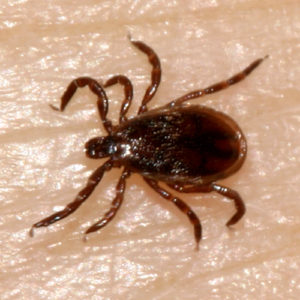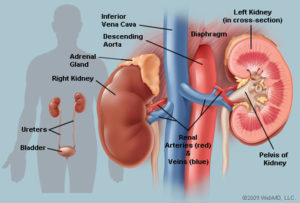By Cat Troiano
According to the Lyme Action Network, Lyme disease is the most common vector-borne disease and the second most common infectious disease in the United States. Lyme disease is a tick-borne disease that can have debilitating effects on the joints, nervous system and heart if the infection is not diagnosed and treated. The good news is that early treatment with an extended period of antibiotic therapy cures most Lyme disease cases, making diagnosis a critical first step toward recovery.
Lyme Disease Prevalence
Lyme disease was first identified in Lyme, Connecticut in 1982, where it was determined to be transmitted by the blacklegged tick, which is also known as the deer tick. Since that time, the geographic range of Lyme disease has expanded. Although the illness has been reported in all 50 states, 95 percent of all cases are concentrated within the northeast and Midwestern states. A significant number of cases have also been diagnosed along the Pacific coast in northern California, Oregon and Washington. In the Pacific region, Lyme disease is transmitted by the western blacklegged tick. The Centers for Disease Control and Prevention (CDC) estimates that roughly 300,000 cases of Lyme disease are diagnosed in the United States each year.
Initial Presentation of Lyme Disease
In order to transmit Lyme disease, an infected tick must remain attached to a host for a period of at least 36 to 48 hours. If a patient is unsure as to how long the tick was attached before it was extricated, he or she must be vigilant for the onset of symptoms. Within 3 to 30 days, the characteristic erythema migrans rash may appear. This rash is circular, red and can resemble a bulls-eye target site. Some patients are unaware of ever having been bitten by a tick, and the appearance of this rash is their first clue. The presentation of the erythema migrans rash, along with a few additional early-stage symptoms, is a strong indicator of Lyme disease infection. These other initial symptoms may include:
• Fever
• Chills
• Headache
• Joint pain
• Muscle aches
• Swollen lymph nodes
• Fatigue
A complicating factor in the diagnosis of Lyme disease is that the rash does not present in all cases. In the absence of the rash, particularly in individuals who are unaware of being bitten by a tick, the generalized symptoms listed above can be indicative of a number of other illnesses that present with the same complaints. Any patient who presents with the rash or who has a known history of exposure to the blacklegged tick and is experiencing these symptoms, with or without the rash, should undergo laboratory testing for Lyme disease.
Diagnosis Through Two Tests
There are two recommended laboratory tests that screen for Lyme disease, and they can both be performed on serum from the same blood sample. The two tests are:
• Enzyme immunoassay, such as the enzyme-linked immunosorbent assay (ELISA) test
• Immunoblot, also known as a Western blot test
Testing guidelines set forth by the CDC recommend a two-tiered system for performing these tests. If the Lyme ELISA test result is negative, then no further testing for Lyme disease is recommended. If the Lyme ELISA test result is either positive or equivocal, then a Western blot test should be performed to confirm a diagnosis of Lyme disease. The diagnosis is conclusive when both the Lyme ELISA and the Western blot tests yield positive results.
Borrelia burgdorferi is the bacterium that causes Lyme disease. Whenever the human body is invaded by a foreign organism, the immune system releases proteins to fight infection. These proteins are called antibodies, and the invading organisms that they target are called antigens.
Both tests measure the levels of borrelia immunoglobulin M (IgM) antibodies and borrelia immunoglobulin G (IgG) antibodies present in the blood. Borrelia IgM levels are detectable two to three weeks after the initial onset of Lyme disease, peaking in concentration at six weeks before diminishing. Borrelia IgG levels take several weeks to show up, exhibiting high levels between four to six months after the onset of infection, and these high levels can remain for years.
Lyme ELISA Test
The Lyme ELISA test is always performed first in the two-tiered Lyme disease testing sequence, and the results determine the next step.
The reference ranges for the Lyme ELISA test results are as follows:
• A negative result is equal to or less than 0.90.
• An equivocal result is between 0.91 and 1.09.
• A positive result is equal to or greater than 1.10.
If the result is negative, either the patient’s symptoms are caused by another condition or the Lyme infection is at such an early stage that the patient’s level of antibodies is still too low to detect. Other conditions that present with similar symptoms should be considered in efforts to diagnose the cause of the patient’s symptoms. If no other condition is diagnosed and the patient remains symptomatic two to three weeks later, repeating the Lyme ELISA test is advised.
If the result is positive or equivocal and the patient has been experiencing symptoms of Lyme disease for 30 days or fewer, then a combination Western blot test that evaluates the levels of both IgM and IgG antibodies should be performed. If the Lyme ELISA test is positive or equivocal and the patient has been symptomatic for longer than 30 days, then a Western blot test that evaluates only IgG levels should be performed.
Western Blot
The results of a Western blot test appear as bands that are labeled by numbers, each of which represents a specific molecular component of the borrelia burgdorferi bacterium. The test evaluates the levels of antibodies against each of these components. The CDC reference guidelines for interpreting a positive Western blot test result for confirmation of a Lyme disease diagnosis are:
• When IgM levels are assessed, two out of the following three bands must be positive:
OspC (21-25)
39
41
• When IgG levels are assessed, five out of the following ten bands must be positive:
18
OspC (21-25)
28
30
39
41
45
58
66
93
If both the Lyme ELISA and Western blot tests have positive results, then the patient is diagnosed with Lyme disease, but how are test results that seem to contradict one another interpreted?
What Can Different Test Results Mean?
When a Lyme ELISA test result is positive for IgM antibodies and negative for IgG antibodies, but the Western blot test result is negative, the patient is either in the early stage of infection or the IgM result is a false-positive. Remember that IgG antibodies do not show up during the first couple of weeks of infection.
Conversely, when the Lyme ELISA test is negative for IgM antibodies and positive for IgG antibodies, but the Western blot test result is negative, the patient either has recovered from Lyme disease previously or the IgG result is a false-positive. IgM antibodies leave the bloodstream after six weeks, and IgG antibodies, which show up later, remain in the bloodstream for years. Once a patient contracts Lyme disease, some IgG antibodies will always be detected thereafter in his or her blood.
If the Lyme ELISA test result is negative for IgM antibodies and positive for IgG antibodies and the Western blot test result is positive, the patient is either in the latter stage of infection or had a previous infection.
Other diseases can trigger false-positive results on a Lyme ELISA test. One reason for this is because borrelia is a member of the spirochete class of bacteria. In addition to Lyme disease, leptospirosis and syphilis are two other examples of spirochete diseases. A patient who does not have Lyme disease and instead has another spirochete disease can end up with a false-positive result on a Lyme ELISA test.
Other medical conditions that are not spirochete diseases and can produce false-positive results on the Lyme ELISA test include:
• HIV
• Autoimmune disorders, such as lupus
• Mononucleosis
• Epstein Barr
• Some bacterial infections, such as helicobacter pylori
There are also other tick-borne diseases that can be the cause of a false-positive Lyme ELISA test result.
Other Tick-Borne Diseases
Ticks transmit more than just Lyme disease. In fact, one feeding of a single tick can transmit multiple diseases into its host. This can result in what is known as coinfection.
In addition to Lyme disease, ticks are responsible for the transmission of the following diseases:
• Alpha-gal/meat allergy
• Anaplasmosis*
• Babesiosis*
• Bartonellosis
• Borrelia mayonii**
• Borrelia miyamotoi*
• Bourbon virus
• Colorado tick fever
• Ehrlichiosis
• Heartland virus
• Pacific Coast tick fever
• Powassan virus*
• Rickettsia parkeri rickettsiosis
• Rocky Mountain spotted fever
• STARI
• Tick-borne relapsing fever
• Tularemia
• 364D rickettsiosis
* diseases transmitted by the blacklegged tick
** a new species of borrelia that, like borrelia burgdorferi, has been determined to cause Lyme disease
Laboratory tests are available for diagnosing many of these diseases.
The most proactive thing that physicians can do to ensure prompt diagnosis and treatment of Lyme disease and other tick-borne disease infections is to monitor the prevalence and geographic range of these illnesses and of the ticks that transmit them. Assessing a patient’s symptoms, acquiring a history of the patient’s travel and outdoor activities, confirming a patient’s exposure to a tick and ordering the appropriate laboratory tests are the keys to enabling your patient to achieve a full recovery instead of suffering the lasting adverse effects that compromise quality of life
 Deer Tick
Deer Tick


 Image: WebMD, LLC
Image: WebMD, LLC